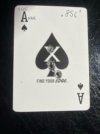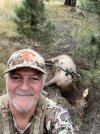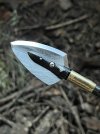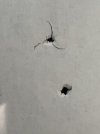You are correct in saying long range bullets should also work well at closer ranges. Long range high BC lead core bullets are made of materials that have high ductility so they don't resist compressive impact forces as well as all copper bullets. The combination of high MV and high BC means a greater impact velocity at short range with proportionally higher compressive forces which, if large enough, may cause a catastrophic failure of the bullet yo even penetrate the hide. Just such an occurrence happened to one of the Proof Research employees. Shot an Elk at 200 yds with an ELD-X bullet from a 20 or 22" barrel. Although the shot was perfectly placed, the bullet splattered on impact and the Elk ran off. The owner of the property killed that Elk about two weeks later and saw the old wound that was simply an ulcer that barely broke the hide. A partitioned bullet or a reliably expanding all copper high BC bullet would have worked a lot better.
So were all the other occasions where an ELDX did work, or when an SST, ELDM, TMK, SMK, TGK, Berger, Nosler Accubond or Long Range Accubond, Nosler BT, Swift Scirocco, etc, etc, etc worked in similar conditions just a fluke?
A partitioned lead core or mono may very well have worked better in that very specific scenario, but I'm confident those aren't the only options that would have. I know you didn't say those are the only two options that would have though. I'm just clarifying is all.
There are indeed many scenarios where if you hunt closer ranges only, or at least mostly, and especially if you're using a fast pushing magnum cartridge, that a well constructed and selected mono is indeed a great choice.
If you're hunting often to either distances that impact velocities regularly dip below like 2200fps, with slower or just medium velocity cartridges, or both, a more frangible bullet that does very well in those conditions tends to be more consistent and produce more reliable quick and clean kills. I'm not saying monos don't or can't. They do indeed. Many of them expand way less though getting below 2200fps, which will begin to greatly reduce wound channel size or forgiveness to shot placement errors. The type that shed petals work best by using that remaining shank and flat front to produce hydraulic force, and even if the petals shed down to like 1600fps, there will be MUCH less speed, momentum, and energy left to convert into a great deal of hydraulic force necessary for really wide wounding and that same forgiveness.
So until we get a mono that truly can do it all emphatically, I personally believe that certain lead cores are a great choice still for certain applications, and perhaps even better for certain applications. I'm not saying they're better overall. I already said monos are a great choice for certain applications too.
To be perfectly clear, or at least try to be lol, I know many monos are used with great success now at long range. They can work at long range just like lead cores can work well at close range. Some of both are better than others.
And monos that have a very high BC only make themselves more effective as well. Since I already mentioned they work best at higher impact velocities (whether petals peeled back or only a shank remaining), the more velocity is retained, the further their range and the better and more reliable they'll work. So again, BC matters for some- or all.
Just a bit of playing devils advocate and keeping the conversation going and give each person's preference a fair acknowledgment.




